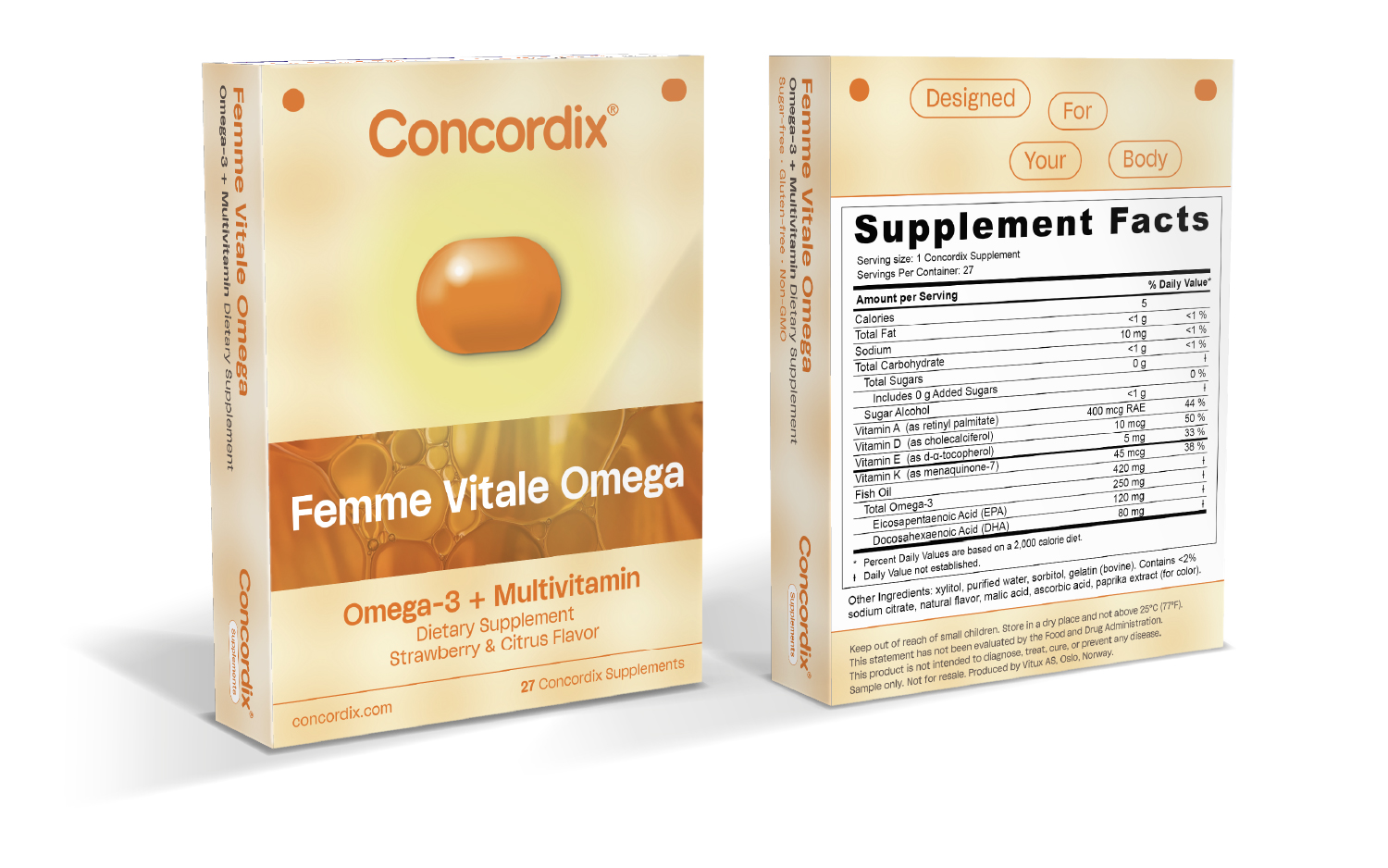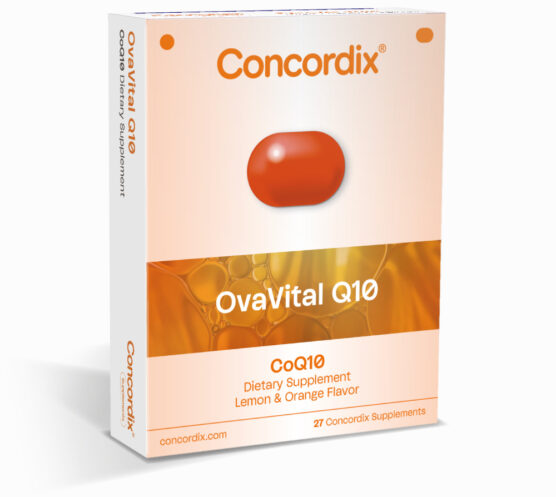• Serving Size: 1 Concordix Supplement
• Flavor: Strawberry & Citrus (other flavors available)
• Color: Orange
• Packaging: Individually sealed in aluminum blister packs; cartons made from recycled material available
Key Benefits in Every Chew
• DHA supports the maintenance of normal brain function and vision.
• EPA and DHA contribute to the normal function of the heart.
• Vitamin D3 and Vitamin K2 help maintain normal bone health.
• Vitamin D3 also supports normal calcium absorption and muscle function.
• Vitamin A contributes to the normal function of the immune system and supports healthy vision and skin.
• Vitamin E helps protect cells from oxidative stress.
Cutting-Edge Absorption Technology for Superior Delivery
Unique to Concordix®, oil-soluble ingredients are expertly packaged in billions of stabilized microscopic oil droplets using patented emulsion technology. In an internal clinical study, this system demonstrated up to 44.9% greater absorption of EPA and DHA compared to standard softgels.
Concordix® also makes it easy to combine multiple lipid-soluble nutrients in one reliable dose for optimal and convenient daily support.
Each chew features a tasty tropical mix flavor, free from sugar or artificial ingredients, with colors from natural sources for a clean experience consumers are seeking. Supplements are individually sealed to preserve freshness, potency, and consistent dosing, while planet-conscious cartons made of recycled materials are available for housing the blister packs.
Formulated for Targeted Benefits
• Patented Concordix® emulsion increases omega-3 absorption for superior results.
• Targeted nutrition supports brain, heart, vision, bones, and immunity, addressing key wellness needs for women after menopause.
• Soft, delicious chews use only intentional ingredients. Sugar-free and free from GMOs for a pleasant, pure daily routine.
• Convenient, stable blister packs lock in freshness and protect every dose.
Vitality & Confidence, Every Day
With Concordix® Femme Vitale, daily nutrition is transformed into a delicious and easy ritual, empowering post-menopausal women to maintain their vitality and confidence with proven absorption, multi-nutrient support, and consistent quality in every chew.
These statements have not been evaluated by the Food and Drug Administration. This product is not intended to diagnose, treat, cure, or prevent any disease.



 Vitamin K is a group of structurally similar fat-soluble vitamins that are required for the complete synthesis of proteins involved in blood coagulation, and for controlling binding of calcium in the bones and other tissues. Without vitamin K, blood coagulation is seriously impaired, and uncontrolled bleeding occurs. Preliminary clinical research indicates that deficiency of vitamin K may weaken bones, potentially leading to osteoporosis, and may promote calcification of arteries and other soft tissues.
Vitamin K is a group of structurally similar fat-soluble vitamins that are required for the complete synthesis of proteins involved in blood coagulation, and for controlling binding of calcium in the bones and other tissues. Without vitamin K, blood coagulation is seriously impaired, and uncontrolled bleeding occurs. Preliminary clinical research indicates that deficiency of vitamin K may weaken bones, potentially leading to osteoporosis, and may promote calcification of arteries and other soft tissues.

